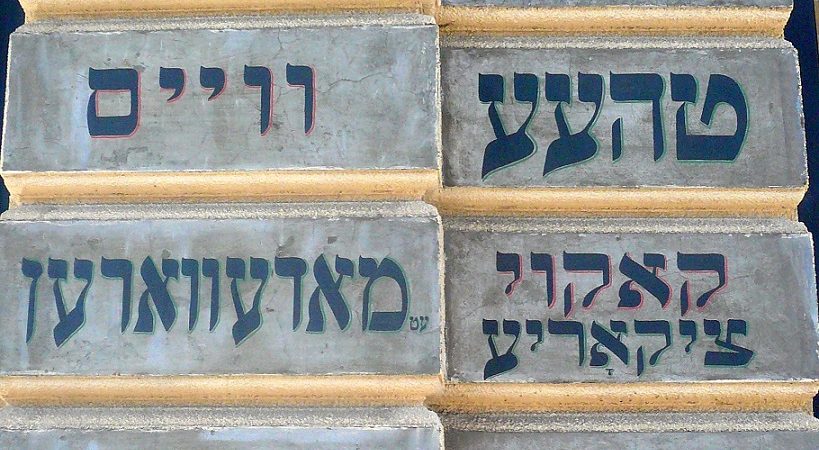On Lviv’s ghost signs from the book “The House with a Stained Glass Window” (by Żanna Słoniowska, 2015), which takes place in the early 1990s:
 I had always tried my best to read the city like a great book, but it turned out he was the one who knew its alphabet. As we stood outside a house that had recently cast off its plaster, he said: “This is in Yiddish: ‘coffee, tea, milk’. Every spring the city moults, revealing letters from various scripts on its façades. The present authorities treat this occurrence like a dangerous disease. Something like a rash. Eradicated in one place, the symptoms keep appearing in others. Yet the self-taught doctors are sure of their qualifications and their chosen therapy.”
I had always tried my best to read the city like a great book, but it turned out he was the one who knew its alphabet. As we stood outside a house that had recently cast off its plaster, he said: “This is in Yiddish: ‘coffee, tea, milk’. Every spring the city moults, revealing letters from various scripts on its façades. The present authorities treat this occurrence like a dangerous disease. Something like a rash. Eradicated in one place, the symptoms keep appearing in others. Yet the self-taught doctors are sure of their qualifications and their chosen therapy.”
“And it never works?”
“Not so far. But… it’ll soon be over. For me, the stained-glass window on your stairwell is the city’s final cultural membrane. If that tears, nothing is going to save it.
“The fall of Rome?” I suggested hesitantly.
 Про львівські написи, з книжки Жанни Слоньовської “Дім з вітражем” (с.68):
Про львівські написи, з книжки Жанни Слоньовської “Дім з вітражем” (с.68):
Я завжди намагалася читати місто як книгу, але виявилося, що ось він – знає абетку. Біля фасаду одного будинку, з якого недавно обвалилася штукатурка, він сказав:
– Це мовою їдиш: ,,кава, чай, молоко”. Що року на весну Львів линяє, відкриваючи на фасадах літери з різних алфавітів. Нинішня влада ставиться до цього явища як до небезпечної хвороби. Щось на кшталт висипки. Симптоми, подолані в одному місці, з’являються щоразу в багатьох інших місцях. Проте доморощені лікарі впевнені у своїй кваліфікації та обраній терапії.
– І в них нічого не виходить?
– Поки що нічого. Але це… триватиме дуже недовго. Для мене вітраж на твоїй сходовій клітці – остання культурна мембрана міста. Якщо вона трісне, його вже ніщо не врятує.
– Падіння Рима? – невпевнено підказала я.





